What is Manikins?
The word manikin came from the Dutch word “Mannekijn”. This means a little man. The oxford dictionary defined manikin as “A short person or a jointed model of the human body, used in anatomy or as an artist’s lay figure.” Generally, a manikin is a life-size model used by dressmakers, tailors, artists, and window dressers to display or fit clothing. Manikins are simple dummies of the human body size and shape, which made up of different synthetic materials. It is also called mannequins or dummy, lay figure or dress form. But manikin and mannequin have some differences. The main difference between Manikin and Mannequin is that the Manikin is a life-sized anatomical human model used in education and Mannequin is a doll or statue used to show clothing in a store. Role and importance of manikins in textile industry are increasing day by day.
Types of Manikins:
Manikins used to display clothes for fit model since the 19th century. Today, manikins are divided into three categories as follow:
- Live manikins,
- Physical manikins,
- Virtual manikins.
Role and Importance of Manikins:
You see a perfect skin, ultra thin waist and long beautiful legs; pop out from the windows of a shop wearing a T-shirt. It tempts us to give a look while passing by the store. This is the world of manikins. There are many way to promote a brand and its sales. But manikins are used as one of these methods to showcase the merchandise.
It is a common psychology of customers, sees the window display of the store first. Its help to takes the decision to enter the store on the basis of the information he can gather from the window display. Manikins add value to the merchandise. It draws attention to the collection of the shop and lures the customers to buy garments.
Manikins are the model of human body generally used by retail store owners to display their merchandise. It helps the retailers to draw the customers to their stores. The customer could also understand the usage of the product. Manikins can give a complete understanding of the utility of the product.
Displaying is not the only purpose of manikins. The applications of manikins in textile industry are discussed below.
Application of Manikins in Textile Industry:
From 15th century, Manikins were widely used by retailers for window display of fashionable items. As the trend for fast fashion is increasing, the application of manikins is also increased in textile industry. It’s widely used by textile manufactures to fashion designers for various purposes. The application of manikins in textile industry is described below:
a) Check the fit, drape, and visual appearance of a design:
Manikins are used to be the fitting models which are used by fashion designer or textile manufacturer to check the fit, drape, and visual appearance of a design on a physical manikin. It selected are normally those with the same size specifications of the designer of manufacturer. The garments are made for man or woman of any size should be graded per many different fit models to ensure that the patterns of the garments are translated accurately across the different body proportions.
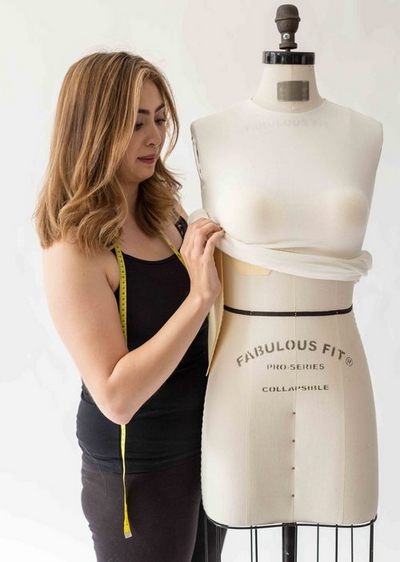
b) Body shape evaluation:
The evaluation of the size and fit of cloth is based on the body shape of a person. Body shape of human is defined as the shape of the body from upper to lower alongside with your waist. Body shapes can be analyzed by calculating the average waist to chest ratio and average waist to average hip ratio.

Female body shapes are classified as apple, oval, pear, banana, or hourglass. And male body shapes are categorized as triangle, oval, inverted triangle, rectangle, and trapezoid as shown in the Figs. The most critical body shapes are among the women; cause of the nature places of prominences, curves, and bulges. Body shape analysis is necessary for the development of accurate garments. Application of virtual manikins ensure the demand of consumers by manufacturing a good fit, are the right size for different body sizes and shapes, are pleasing to the eye, and catch the attention of consumers.

c) Inspect garment construction and garment:
Sample specifications in the textile industry, manikins are used to inspect the specification for sample garments. These sample garments are constructed based on the manikin size so that the quality of the garments could be investigated. Once the sample garments are ready, it will be put on the manikins that have the same size. Having the correct measurement, manikins can make ensure the garment construction be evaluated effectively.
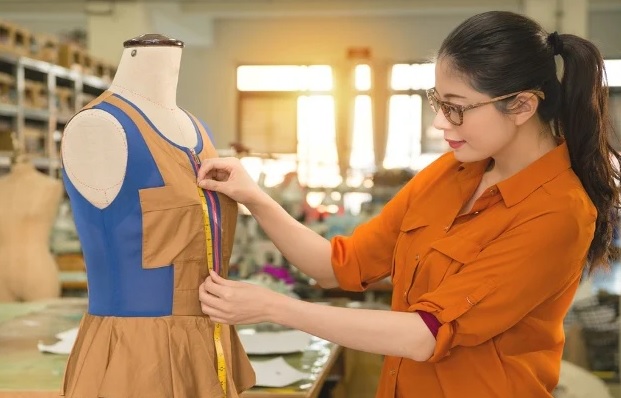
d) Recognize the proportions and dimensions of chest, waist, and hip:
In the textile industry, the most important quality to check from the sample garments are the proportion and dimensions of body shapes. The key measurements used to check proportions are generally the vertical and horizontal dimensions like: height, chest, waist, hip girth, etc. The manikins are used to evaluate the proportions of the sample garments.
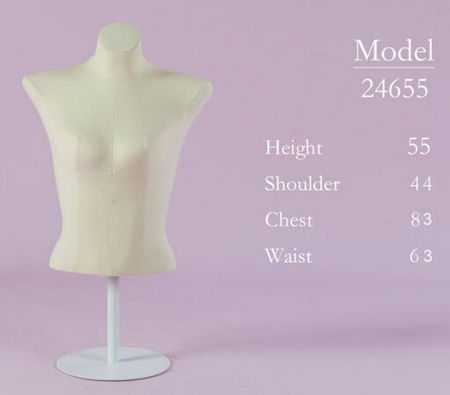
e) Evaluate clothing size and fit:
Manikin can be created to idealize how clothes can look on a certain human body shape. When the idealized the clothes displayed on the manikin, who has the same body size and shape, is proof that the manikin has successfully play its role.
f) Develop profile of different body sizes and shapes:
Garment can be digitally fitted and the garments can be converted into unique 2D patterns using the 3D body scanner data. The technology for the textile industry has risen far ahead since the last two decades. Virtual manikins are used to display the anthropometric variations of human body sizes and shapes. These digital manikins enable to model the different shapes for different garment types. Virtual manikins can map the body and deliver the correct size garments online at the shortest time possible.
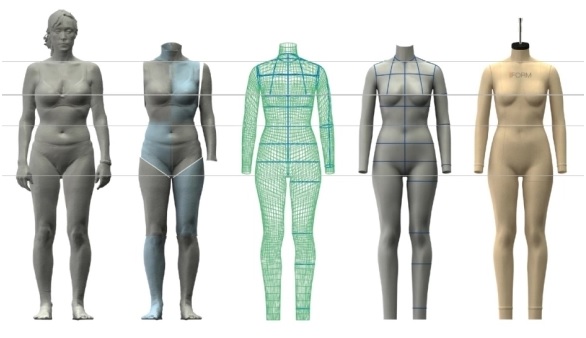
g) Confirm the size of the garment to be consistent to the target market:
Confirmation of the size of the garments is important to be consistent to the target market. It helps to meet the quality expected from the buyers. It is consistent with the size specifications of garments given by the buyer at necessary body dimensions. Selected manikins with the similar specs help to confirm the size to target market. Size of the manikins needs to conform to the body size and fit of the textile.
h) I-dummy for fitting and development:
I-dummy is the update version of robotic manikin. This is controlled by the computer introduced to the apparel market. It’s also known as “smart manikin”. It can transform into any size with the help of the computerised system. I-dummy is a physical manikin. That changes its body shapes and size and can elongate when you touch the screen of the computer as can be seen in the Fig.

i) Manikins in shop display:
The rapid urbanization and brand awareness among younger’s had been a boon for the retail sector. A lot of attention is being created by attractive store layout strategic and effective visual display and presentation of latest line of merchandise to draw more and more foot traffic into the outlets.
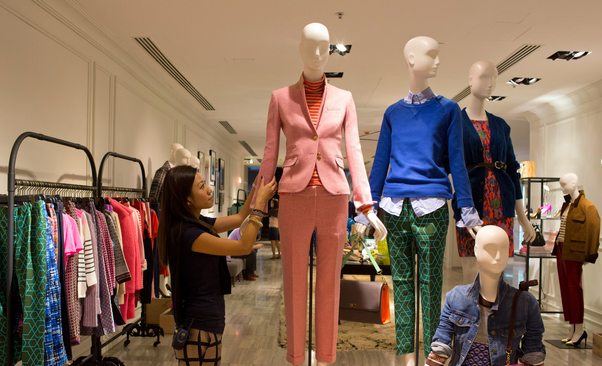
j) Visual merchandising:
Manikins are the trademark of visual merchandising for decades. It is the most promising and effective tools used by retailers to present latest fashion trends. It is coined as the art of retailing aimed at establishing linkage between fashion, product design, and marketing with merchandise the focal point.
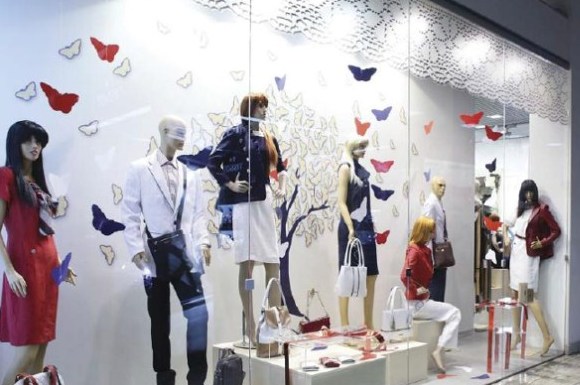
k) Manikins for medical textile evaluation:
Medical textile sector is one of the most dynamically expanding sectors in the technical textile market. In healthcare, simulation is essential to avoid high rates of error, large numbers of preventable adverse events and to improve patient safety. Providing a safe research environment by manikins for repeated testing, exposure to complex conditions and assessment is definitely an asset to help saving lives.

l) Manikins in defense applications:
In defence textile, the manikins used to evaluate the performance of body armours, helmets, protection devices, ballistic shields, etc. It used for experimenting of the protection provided by body armour against primary blast injuries, casualty probabilities from IED explosions, blast-mitigation capability of the advanced combat helmet and so on.

m) Manikins in automotive sector:
In automotive sector, manikins are used to evaluate the internal environments of automobile, truck, and aircraft and so on. It used to evaluate the comfort aspects of automotive seats to the passengers. The importance of airbags in automotive industry is increasing day by day and complete adult manikins are used for the airbag testing in several laboratories.
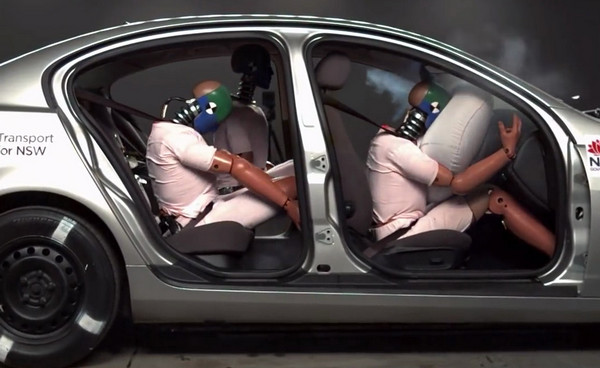
Future Trends of Manikins:
The future retail will be more visually attractive with the help of beautifully dressed manikins. The use of smart devices can help the consumers to see the 360-degree view of the clothing in manikins even when the stores are closed. As the application of 3D technology is becoming popular day by day, the 3D display of clothing by using the manikin should be the future trend.
References:
- Manikins for Textile Evaluation Edited by Rajkishore Nayak and Rajiv Padhye
- https://www.fibre2fashion.com/industry-article/6937/mannequins-enhancing-the-retail-experience
- https://www.askdifference.com/manikin-vs-mannequin
Author of this Article:
Md. Mahedi Hasan
B.Sc. in Textile Engineering
Textile Engineering College, Noakhali.
Email: mh18.bd@gmail.com
